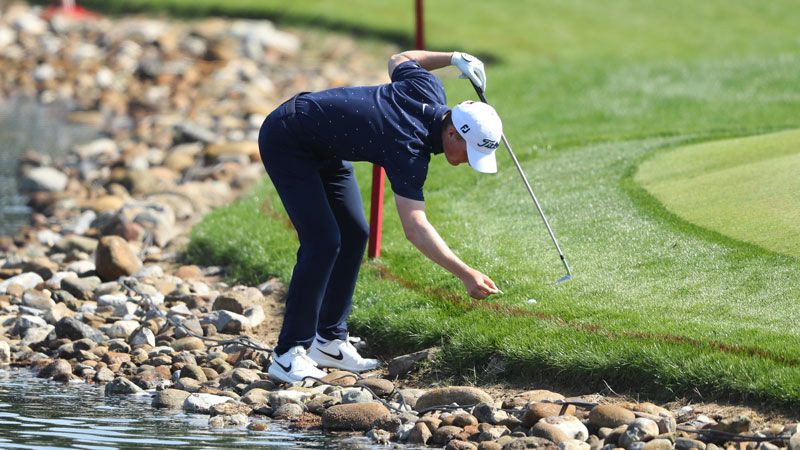By Mitch Moon
With the most recent changes to the Rules of Golf by the United States Golf Association, those ponds, creeks and other water related obstacles, that golfers find occasionally on a golf course and formerly called hazards, are now referred to as penalty areas.
The new definition refers to,
“Any body of water on the course including a sea, lake, pond, river, ditch, surface drainage ditch, or other open watercourse (even if not containing water).”
It is one of the five defined areas within the Rules of Golf and they are a common occurrence on golf courses throughout the world.
What’s golf without a little water to go over, around, or just to look at.
Depending on where you play, the golf course may be marked with red stakes, or paint, may only get marked for tournament play, or the course may never see a can of paint all year.
Growing up on a small nine-hole golf course in Iowa, the creek and ponds that dot the course were never been painted, or had stakes put in the ground, to designate the penalty area, since its inception.
Do you really need a painted line, or penalty stake to tell you that your ball has found a watery grave and will never be seen again?
If you happen to find an unmarked penalty area while playing, it’s really not an issue. The Rules of Golf tell us,
“The edge of the penalty area is defined by its natural boundaries (that is, where the ground slopes down to form the depression that can hold the water.).”
The definition also lets us know that any penalty area that isn’t marked is by default a red penalty area and thus the player has a couple of options to choose from, when taking relief, which is something I will expand upon in the September edition of the Indiana Golf Journal.
In the meantime, do yourself a favor, try to keep your ball out of the penalty areas and in the fairway!










